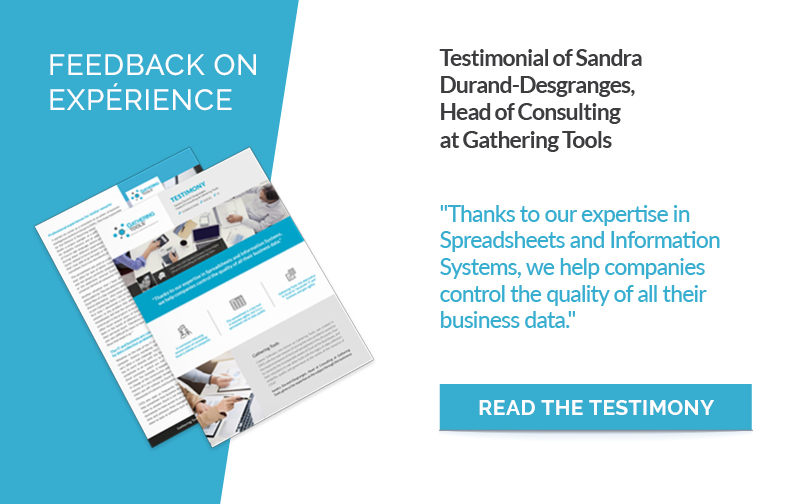In a world facing the revolution imposed by digitalisation and mobility on the market rules and competition, companies have only one option, to anticipate and adapt permanently. As their performances have become what can be described by ‘short-lived’, it is now the time for action and reaction that makes the difference. It can be summed up in one word “agility”.
In what must be called an upheaval, the IT Department has a central role to play which is the opportunity to accompany the entire company towards more agility. Provided that the department establishes this principle in line with the business sector.
Business sectors more and more demanding
 Notified to be more efficient, to lighten their costs, business sectors are under pressure. Thus, in order to pay for less expensive deliveries, a logistics manager will want to connect his production system to that of his carriers to provide them with a precise load plan. Another example, the owner of a restaurant chain will want to replenish his points of sale to the nearest unit according to the cash passages.
Notified to be more efficient, to lighten their costs, business sectors are under pressure. Thus, in order to pay for less expensive deliveries, a logistics manager will want to connect his production system to that of his carriers to provide them with a precise load plan. Another example, the owner of a restaurant chain will want to replenish his points of sale to the nearest unit according to the cash passages.
To contribute to the competitiveness of the company, businesses must therefore deploy new solutions, take advantage of innovative technologies, and as quickly as possible. And often, they do not need the IT Department to identify these solutions. They get information from their suppliers, they do research online, they are directly solicited by providers able to know their “nerve-racking” points and respond.
Towards a new valuable proposition
To top it off, these technologies are at your fingertips. No need for a IT Department to subscribe a cloud subscription to a software solution that has become indispensable – an automated promotional campaign management tool for the marketing department, for example. There is no need for a ISD to develop an application because now, a logistic engineer can easily automate the sending of data to a carrier after extracting them from their ERP and formatted in Excel.
We have the impression that if we ask the IT for a solution, they will take years to establish one. The latter can no longer be ingrained in its field, invoking issues of technical support and control of resources. It must become an agile process, with a responsive CIO and IT Department. In a matter of fact, they must be more proactive for a new value proposition for the business sector and for the entire company.
More agile methods in IT
To establish agility, IT has several options. If it wants to propose an agile approach to the business, the IT Department has a methodological toolbox brought by the skills and experience of its collaborators, such as, iterative development Methods (Scrum), indirect connection with the user (X Programming), new approaches to relations between development and operational teams (DevOps) and design (design thinking).
And, this is usually the problem. Most business users express needs that the IT could fulfill, but most of them do not have the experience of running the projects. The IT is therefore obliged to provide a technical solution but also the entire methodology for collecting requirements, steering and monitoring.
This is well understood by some publishers who propose solutions facilitating the dialogue between IT and business. With a solution like Gathering Tools, the IT can start directly from the Excel processes developed by the business lines, to respond quickly and in the short cycle to new demands such as, data exchange, interfacing with the IS, and securing entries, workflows. This avoids redefining the initial need – sometimes misunderstood by the IT, redo a specification and launch a development cycle of several months. Also, all the business know-how already formalised in Excel spreadsheets is preserved.
Finally, to build credibility, an agile IT Department will need to increase its understanding of the expectations and goals of its internal customers. This will lead to development or acquiring transversal profiles, both architects and business partners, able to put into perspective business issues and technical aspects. Their role will be to put the projects in a global vision of the company and its information system.
Rethinking the digital workplace
With good organisation, the IT Department can respond with agility to the various requests of its internal customers and regain their trust. Faced with a new or totally emerging need, the IT Department will propose its methodological contribution. With its understanding of the issues, it will lead business people to iterate to achieve quick results, aligned with their objectives, and accelerate the production of innovative solutions.
To maintain and consolidate an existing solution, an agile IT will mobilise the right technologies. Thus, with Gathering Tools, available on-set or in SaaS (see our article “Gathering Tools with the benefit of SaaS“), it will be able to integrate the Excel processes developed by the business lines into the company’s information system. It will provide an immediate response to a need to secure data flow without losing business expertise.
In doing so, an agile IT provides much more than a response capability and means. It accompanies the professions in the configuration and the constant evolution of a “digital workplace” centered on their expertise. A mission much more rewarding than the fight – lost in advance – against Shadow IT.





